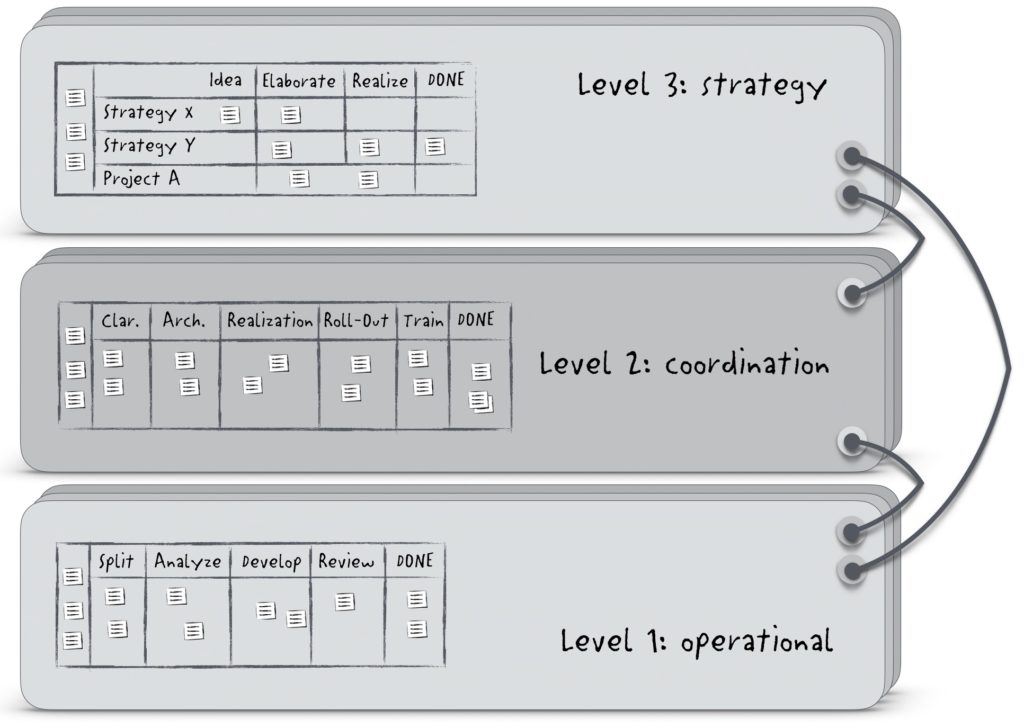When it comes to agility, most people think of Kanban or Scrum at the team level. And then of course the many scaling frameworks come to mind like LeSS, SAFe, DAD or Nexus. These frameworks primarily address the question of how the work of several or many teams on one or more products can be coordinated and synchronized. Especially in legacy IT landscapes with many dependencies this is a legitimate and frequently asked question, which unfortunately often obscures the far more important question of decoupling, but that is different story. The focus will now be on the question of how to give agile organizations alignment at different flight levels with corresponding planning horizons. And to this end, it is important that strategy remains an empty sphere of action that is filled with content from bottom to top.
Klaus Leopold, who coined the term of the different flight levels, distinguishes three organizational improvement levels. On the operational level, the individual teams work according to their individual agile methods (Klaus certainly prefers Kanban to Scrum, but that doesn’t matter here). At the level above, the necessary coordination between the teams and products takes place in order to jointly generate value for the customer. And on the strategic levels at the top, the overall direction is set for them all. Like in this picture.

These flight levels correspond to different planning horizons. At the top level, the strategic goals for the next few months are set, while at the operational level the teams deliver contributions to these goals in sprints of a few weeks, which, coordinated by the middle level, result in a coherent and useful whole. All levels have an agile rhythm, but the cycles vary in length according to their planning horizons.
Agility in this sense is therefore not possible without hierarchy. Quite the contrary, it is this joint orientation that makes agile teams effective and powerful in their self-organization. However, every (new) hierarchy has its pitfalls, especially in the course of a transformation of a traditional hierarchical organization into an agile one as it can also be misunderstood or deliberately abused.
The idea is not to give orders from top to bottom. The idea is to provide alignment for autonomy. And this requires that the rough direction is given from top to bottom, but the details as to what and how exactly and in which order must come from bottom to top. The strategy forms an empty sphere of action bounded by jointly developed emergent principles of collaboration. The teams then fill this sphere in a self-organized way with the necessary actions to attain the strategic goals.
Strategy is initially an empty sphere of action, bounded by principles. It is required for the unknown part of the way. For the known part, a plan made up of rules is sufficient.
Gerhard Wohland





